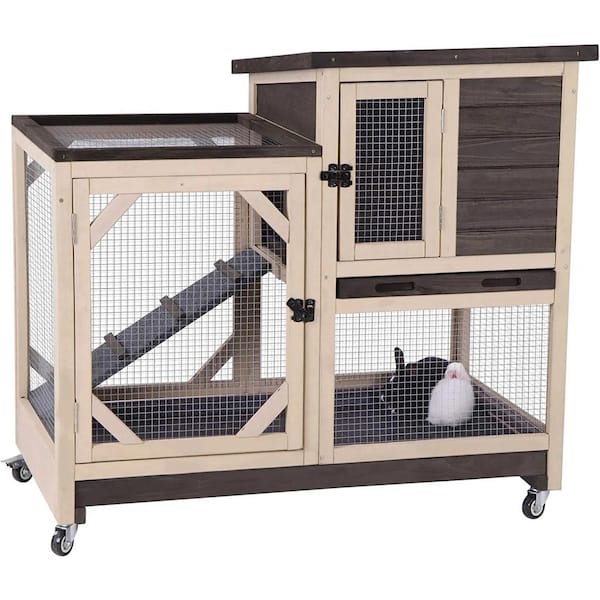
Effective Ways to Manage Detritus Worms in Your Aquarium
Maintaining a healthy aquarium environment is crucial for both the fish and the beneficial organisms that inhabit it. Among these are detritus worms, which play an essential role in breaking down organic waste and contributing to the overall health of aquarium ecosystems. These small, bottom-dwelling scavengers not only consume debris but also promote nutrient cycling, offering significant benefits for aquarists committed to sustainable practices. In this article, we will explore effective ways to manage detritus worms in your aquarium, covering everything from their care to their habitat preferences and the advantages they bring.
We'll delve into the types of detritus worms, their breeding habits, and how they impact water quality. Additionally, you'll discover practical tips for feeding them, setting up their habitat, and maintaining their population for optimal aquarium health. By gaining a deeper understanding of these creatures, aquarists can enhance their fish tank biodiversity and ecological balance, making their aquariums thriving ecosystems.
As we navigate through this guide, expect to find expert recommendations and insightful strategies, ensuring that your aquarium thrives and remains a beautiful aquatic habitat. Let's dive into the fascinating world of detritus worms and learn how to effectively manage them.
Understanding Detritus Worms and Their Role
Detritus worms, primarily found in freshwater environments, are key players in the aquatic food web. They feed on decaying organic material, helping to decompose waste and recycle nutrients back into the ecosystem. This makes them invaluable for maintaining a healthy aquarium ecosystem, especially in tanks that produce organic waste.
The role of detritus worms extends beyond waste decomposition; they also contribute to biological filtration. As they consume detritus, these worms help break down harmful substances such as ammonia and nitrites, which are detrimental to fish health. By promoting a balanced nitrogen cycle, detritus worms ensure better water quality and overall aquarium health.
In terms of aquarium care, incorporating these worms can reduce the need for frequent cleaning, thus allowing aquarists to focus on other aspects of tank management. Consider integrating detritus worms into your tank setup to achieve an efficient waste management system while enhancing the biological diversity of your aquatic environment.
Types of Detritus Worms: Which is Right for Your Aquarium?
There are several types of detritus worms known for their compatibility with various aquatic setups. Common varieties include Lumbriculus variegatus and Tubifex tubifex. Both species thrive in freshwater environments, although they exhibit different behaviors and feeding habits. Choosing the right kind of detritus worm is essential for optimizing their benefits in your tank.
Many aquarists find that Lumbriculus variegatus, often praised for its resilience and adaptability, works well in a planted aquarium where it can help with organic matter breakdown. Additionally, this type is known for its ability to aerate the substrate, promoting better plant growth.
On the other hand, Tubifex tubifex is often considered a more specialized feeder, making it a great choice for aquascapers looking for specific environmental conditions. Knowing the differences can help aquarists select types that best suit their aquarium's needs, particularly in relation to substrate and overall tank dynamics.
Detritus Worms Care and Feeding Tips
Caring for detritus worms involves creating an ideal habitat where they can thrive. Start by selecting a suitable substrate, such as fine sand or nutrient-rich soil, which allows these worms to burrow and feed effectively. Pay attention to the substrate depth—approximately 1 to 3 inches is ideal for providing both space to dig and access to organic material.
Feeding detritus worms is relatively straightforward. They primarily survive on organic debris in the substrate but can also benefit from supplemental feedings. Consider using high-quality fish food or specific detritus worm food blends available at aquarist stores. It’s essential to avoid overfeeding, as excess food can lead to poor water quality and unwanted algae growth.
To trigger detritus worms' growth and encourage a healthy population in your aquarium, maintain stable water parameters. Regular water changes and monitoring of ammonia and nitrate levels will contribute to their overall health and the efficiency of their waste processing capabilities. Remember that a thriving worm population indicates a healthy tank, so keep an eye on these indicators.
Breeding Detritus Worms: Tips for Successful Propagation
Breeding detritus worms in your aquarium can be a rewarding experience. These organisms are relatively easy to breed, requiring little intervention if the conditions are favorable. To encourage breeding, ensure you provide a suitable environment with ample hiding places and abundant food sources.
The breeding cycle of detritus worms typically occurs in a stable aquarium environment with suitable water temperature and quality. Maintaining water temperatures between 18°C to 24°C (64°F to 75°F) supports their reproductive processes. Healthy worms will produce cocoons, each containing several embryos that develop into new worms, thus sustaining your population.
Regularly monitor your detritus worm population and adjust feeding strategies to support breeding efforts. Introducing plant debris or excess detritus can stimulate reproduction, as worms thrive on organic matter breakdown. This helps create a self-sustaining ecosystem where detritus worms can prosper and contribute significantly to tank health.
Through careful monitoring and environmental management, you can maintain a flourishing population of detritus worms, enhancing the ecological balance of your aquarium.
Detritus Worms and Their Impact on Water Quality
One of the most beneficial effects of incorporating detritus worms into your aquarium is their impact on water quality. As they consume organic detritus, they break down waste into simpler forms that are less harmful to fish and other aquatic organisms. This natural scavenging behavior helps to prevent toxic levels of ammonia and nitrates from building up.
In addition to breaking down waste, detritus worms also participate in the larger biological filtration system of your aquarium. By creating tunnels in the substrate, they promote oxygen flow, thus aiding beneficial bacteria responsible for further breaking down organic compounds. This interaction contributes to effective water quality management.
Moreover, having a diverse microbial community in the tank substrate encourages nutrient cycling, which directly benefits plant health and fish well-being. The relationship between detritus worms and healthy water parameters cannot be overstated; thus, integrating these worms into your aquarium is a step towards ensuring a balanced and thriving aquatic environment.
 example.com/image2.png
example.com/image2.png
Common Problems with Detritus Worms and Their Solutions
Even though detritus worms are generally easy to care for, problems can arise if their environment is not properly managed. One common issue is overpopulation, which can lead to imbalances in the aquarium ecosystem. To address this, regularly assess their population and adjust food supply to maintain a healthy balance.
Another problem aquarists may encounter is poor water quality, often resulting from excessive waste buildup that exceeds the worms' cleaning capabilities. This situation can be remedied through regular water changes and substrate cleaning, ensuring that the detritus worms have enough organic material to thrive without overwhelming the aquatic environment.
Additionally, detritus worms may become stressed if there are sudden changes in water parameters. Such stress can lead to die-offs that upset the ecological balance. Maintain consistent conditions—check pH levels, temperature, and ammonia levels regularly to ensure your detritus worms remain healthy and productive.
By being proactive and attentive to these conditions, aquarists can manage detritus worms effectively and ensure their continued contribution to the aquarium ecosystem.
Best Practices for Integrating Detritus Worms in Your Aquarium
The integration of detritus worms into your aquarium requires attention to detail and an understanding of their needs. Begin by researching specific species to determine which are best suited for your tank setup. When introducing worms, ensure that your aquarium's substrate is prepared—healthy substrates foster better growth and health for detritus worms.
Consider creating a designated area within the aquarium, such as a low-traffic region, where detritus worms can thrive undisturbed. Incorporating live plants can also enhance their habitat, as these provide organic matter and contribute to a thriving ecosystem.
Additionally, think about water circulation and filtration methods. While detritus worms benefit from oxygen-rich environments, strong currents may displace them or damage their delicate bodies. Aim for moderate water flow, which allows worms to perform their scavenging role efficiently without being washed away.
 example.com/image3.png
example.com/image3.png
Finally, maintaining a consistent feeding schedule and monitoring water quality ensures that your detritus worms remain healthy and active. As an aquarist, your goal should be to create an environment where detritus worms can contribute to organic waste breakdown while also enhancing your aquarium's overall diversity and health.
Q&A: Common Questions About Detritus Worms
What are detritus worms and why are they beneficial for aquariums?
Detritus worms are small, bottom-dwelling creatures that feed on decomposing organic material in fish tanks. They are essential for breaking down waste, promoting nutrient cycling, and improving water quality.
How do I introduce detritus worms to my aquarium?
To introduce detritus worms, ensure your tank is prepared with suitable substrate and stable water conditions. You can purchase them online or at your local aquarium store, and gently release them into the desired area of your tank.
How can I maintain a healthy population of detritus worms?
Maintain a balanced food supply and monitor water parameters regularly to support detritus worm health. Ensure that the substrate is rich in organic material for them to feed on while avoiding overpopulation through proper feeding practices.
Can detritus worms negatively impact fish health?
Generally, detritus worms are harmless to fish when maintained properly. However, if their population exceeds the tank's waste processing capacity, it may potentially lead to water quality issues that can affect fish health.
What is the best substrate for detritus worms?
Fine sand or nutrient-rich soil works best for detritus worms, allowing them to burrow and thrive effectively. Ensure that the substrate depth is appropriate for worm activity while also providing a stable environment for plants and other tank inhabitants.